
Journal of Fungi
Scope & Guideline
Connecting Global Minds in Fungal Research
Introduction
Aims and Scopes
- Fungal Ecology and Diversity:
Research on the diversity of fungi in various ecosystems, their ecological roles, and their interactions with other organisms, including plants and animals. - Fungal Pathogenesis and Disease:
Studies exploring the mechanisms of fungal infections in humans and other organisms, including the identification of virulence factors and antifungal resistance. - Biotechnology and Industrial Applications:
Investigations into the use of fungi in biotechnological applications, including the production of enzymes, bioactive compounds, and biocontrol agents. - Genomics and Molecular Biology:
Research focused on the genomic and molecular characterization of fungi, including the study of gene expression, metabolic pathways, and genetic manipulation techniques. - Environmental Mycology and Bioremediation:
Exploration of the role of fungi in environmental processes, including their use in bioremediation of contaminated environments and their interactions with pollutants. - Medicinal Fungi and Pharmacology:
Studies on the pharmacological properties of fungi, including their potential as sources of new drugs and therapeutic agents. - Mycorrhizal Fungi and Plant Interactions:
Research on the interactions between mycorrhizal fungi and plants, focusing on nutrient uptake, plant growth promotion, and stress tolerance.
Trending and Emerging
- Antifungal Drug Resistance:
There is a growing focus on understanding antifungal resistance mechanisms, particularly in clinically significant species like Candida auris, driven by the increasing incidence of invasive fungal infections. - Fungal Contributions to Climate Change Mitigation:
Research exploring the role of fungi in carbon cycling and their potential applications in bioremediation and environmental sustainability has gained momentum. - Fungal Interactions with the Human Microbiome:
The intersection of mycology with microbiome research is emerging as a significant area of study, particularly regarding gut fungi and their roles in human health and disease. - Synthetic Biology and Genetic Engineering of Fungi:
Recent advancements in genetic manipulation techniques, including CRISPR/Cas9, are paving the way for innovative applications of fungi in biotechnology. - Emerging Fungal Pathogens and Zoonotic Diseases:
There is increasing attention on newly identified fungal pathogens and their zoonotic potential, particularly in the context of global pandemics and changing ecosystems. - Environmental Mycology and Fungal Ecology:
Research into the ecological roles of fungi, particularly in relation to biodiversity conservation and ecosystem services, is becoming more prominent. - Fungal Metabolomics and Secondary Metabolite Research:
The exploration of secondary metabolites produced by fungi and their bioactivities has expanded, with implications for both pharmacology and agriculture.
Declining or Waning
- Traditional Fungal Taxonomy:
There is a noticeable decline in papers focusing solely on traditional taxonomic classifications, as the field moves towards more integrated approaches utilizing molecular techniques. - Fungal Biopesticides:
Interest in fungal biopesticides appears to be waning as researchers explore more diverse and innovative biocontrol methods, including bacterial and plant-based solutions. - Fungal Pathogen Resistance Mechanisms:
While still relevant, the exploration of resistance mechanisms in a purely descriptive context has decreased in favor of more dynamic studies involving host-pathogen interactions and environmental factors. - Studies on Historical Fungal Uses:
Research focusing on historical uses of fungi in traditional medicine or ancient practices has become less prevalent as the journal emphasizes contemporary applications and scientific validation. - Isolation Studies of Environmental Fungi:
The focus on merely isolating and identifying environmental fungi has decreased, reflecting a shift towards understanding their functional roles and interactions in ecosystems.
Similar Journals

JOURNAL OF BASIC MICROBIOLOGY
Fostering Excellence in Microbiology StudiesJOURNAL OF BASIC MICROBIOLOGY is a premier publication in the field of microbiology, published by WILEY since 1985. With a significant presence in Germany, this journal encompasses a wide spectrum of research topics, focusing on applied microbiology and biotechnology as well as diverse areas within medicine. Holding a commendable Q2 ranking in both its categories for 2023, it plays a crucial role in disseminating innovative findings and methodologies to the community. Researchers will find it to be an essential platform for sharing high-quality work, where it currently stands at rank #47 in the applied microbiology and biotechnology category, representing the 63rd percentile among international journals. The JOURNAL OF BASIC MICROBIOLOGY caters to a growing audience of professionals and students, offering insights essential for advancement in microbiological research and its applications. While it does not currently offer an Open Access option, it remains an influential outlet for academic excellence, continuously contributing to the development of the field through its rigorous peer-reviewed articles.
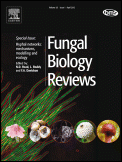
Fungal Biology Reviews
Synthesis and Insight in Fungal StudiesFungal Biology Reviews is a premier academic journal published by Elsevier Science Ltd, focusing on the rapidly evolving field of fungal biology. With an ISSN of 1749-4613 and an E-ISSN of 1878-0253, this journal has established itself as a leading resource for researchers, academics, and professionals dedicated to advancing our understanding of fungi and their ecological, agricultural, and medical implications. As a testament to its impact and quality, Fungal Biology Reviews holds a distinguished Q1 classification in both Microbiology and Plant Science categories for 2023, with a notable rank of 26 out of 182 in the Microbiology category. The journal uniquely blends comprehensive reviews that synthesize current research findings with forward-looking perspectives that pave the way for future studies, making it indispensable for anyone involved in fungal research. Although it operates under a traditional access model, its commitment to fostering impactful scholarship ensures that it remains relevant and widely cited within the academic community. Spanning from its inception in 2007 through to its projected conclusion in 2024, Fungal Biology Reviews continues to shape the framework for future discoveries in fungal biology.
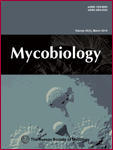
MYCOBIOLOGY
Pioneering Discoveries in Health and AgricultureMYCOBIOLOGY is an esteemed open-access journal published by Taylor & Francis Ltd, specializing in the fields of Infectious Diseases, Microbiology, and Plant Science. Since its inception, the journal has provided a platform for innovative research, showcasing a diverse range of studies that delve into the complexities of mycology and its vast implications on health, agriculture, and the environment. With a commendable impact factor and a Q2 ranking in Plant Science as of 2023, MYCOBIOLOGY facilitates the dissemination of vital findings to a global audience of researchers, professionals, and students. In addition to its commitment to high-quality content, MYCOBIOLOGY has embraced open access since 2018, ensuring that the latest advancements in mycological research are readily available to the academic community and the public. By bridging gaps in knowledge and fostering collaboration across disciplines, MYCOBIOLOGY plays a crucial role in advancing our understanding of fungal biology and its myriad applications.
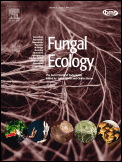
Fungal Ecology
Unveiling the Ecological Significance of FungiFungal Ecology, published by Elsevier Science Ltd, is a leading international journal dedicated to the exploration and advancement of our understanding of fungal biology and its ecological significance. With an impressive impact factor and recognized in the second quartile (Q2) across various categories such as Ecological Modeling, Ecology, Ecology, Evolution, Behavior and Systematics, and Plant Science, this journal offers a critical platform for researchers and professionals to disseminate and discuss innovations in fungal ecology. Since its inception in 2008, the journal has built a solid reputation, particularly highlighted by its impressive Scopus rankings, including a top percentile status in ecological fields. Researchers are encouraged to submit their findings that contribute to the understanding of the ecological roles of fungi, their interactions within ecosystems, and their applications in environmental science. Although the journal does not offer open access, it remains a vital resource for academics and practitioners aiming to stay ahead in the rapidly evolving fields of fungal research and ecology. Located in the vibrant heart of the Netherlands, the journal continues to foster scholarly engagement and collaboration among scientists globally.
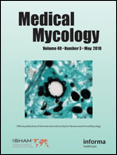
MEDICAL MYCOLOGY
Illuminating the Pathways of Fungal PathogenesisMEDICAL MYCOLOGY, published by Oxford University Press, is a premier journal dedicated to the study of fungal infections and their clinical implications. With an ISSN of 1369-3786 and an E-ISSN of 1460-2709, this journal has established itself as a vital resource in the fields of Infectious Diseases and Medicine, holding a respectable Q2 ranking for both categories and a Q1 ranking in the veterinary sector in 2023. Spanning a rich history from 1962 to 2024, MEDICAL MYCOLOGY serves as a platform for innovative research, case reports, and review articles that contribute to the understanding and management of mycological diseases. The journal's commitment to advancing knowledge is reflected in its Scopus rank of #120 out of 344 in Medicine - Infectious Diseases, positioning it within the 65th percentile. With open access options available, it aims to ensure that critical research is accessible to a global audience, enhancing collaboration and knowledge sharing among researchers, healthcare professionals, and students alike.
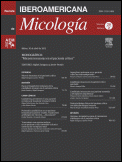
REVISTA IBEROAMERICANA DE MICOLOGIA
Cultivating Insights in Mycology for Global HealthREVISTA IBEROAMERICANA DE MICOLOGIA, published by the ASOCIACION ESPANOLA MICOLOGIA-AEM, is a vital resource for those engaged in the study of mycology and infectious diseases. With a history spanning from 1996 to 2024, this journal is committed to advancing knowledge in the field through the dissemination of high-quality research articles, reviews, and case studies. Although it currently features a Q3 ranking in Infectious Diseases and a Q4 ranking in Microbiology for 2023, its impact is significant given the niche focus it serves, catering to a specialized audience of researchers and practitioners. While access is not open, the journal continues to be a preferred platform for scholarly communication among professionals in Spain and beyond. The editorial office, located in Bilbao, serves as the hub for rigorous peer-review and publication processes, ensuring that the latest advancements and findings in the field of mycology are effectively shared within the scientific community.

SYDOWIA
Exploring the Intersections of Ecology and Plant ScienceSYDOWIA is a prestigious academic journal based in Austria, published by Verlag Ferdinand Berger Sohne Gesellschaft mbH, that has been a cornerstone of scientific publishing since its establishment in 1996. With an ISSN of 0082-0598, SYDOWIA focuses on critical research in the fields of Ecology, Evolution, Behavior and Systematics as well as Plant Science, earning a notable classification in Category Quartiles with Q3 in Ecology-related disciplines and Q2 in Plant Science for 2023. The journal’s strategic insights into agricultural and biological sciences have secured a place within the Scopus rankings, where it holds the position of #191 out of 516 in Plant Science and #278 out of 721 in Ecology categories—reflecting its growing influence with a percentile standing of 63rd and 61st, respectively. Although SYDOWIA is not an Open Access journal, it continues to thrive in delivering scholarly articles that promote advancement and innovation in ecological and botanical research. Researchers, professionals, and students alike can rely on SYDOWIA as a vital resource for disseminating knowledge and fostering exploration in these essential scientific domains.

NEW ZEALAND JOURNAL OF BOTANY
Advancing Knowledge in New Zealand's Botanical LandscapeThe New Zealand Journal of Botany, published by the esteemed Taylor & Francis Ltd, serves as a pivotal platform for disseminating significant research in the fields of Ecology, Evolution, Behavior and Systematics, as well as Plant Science. With a rich history dating back to 1963 and an impressive convergence extending to 2024, this journal has established itself as an essential resource for researchers and professionals dedicated to understanding the complexities of plant life and ecological systems in New Zealand and beyond. The journal is currently categorized in the Q3 quartile for both relevant disciplines as of 2023, reflecting its balanced influence within the global academic community. Although not an open access journal, it retains a significant impact factor, evidenced by its Scopus rankings, which place it within the top half of its categories. This makes it an invaluable tool for students, researchers, and academics aiming to engage with robust, peer-reviewed scientific findings and contribute to the evolving discourse surrounding botany and ecological research.
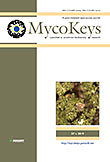
MycoKeys
Connecting researchers to the pulse of fungal science.MycoKeys, published by PENSOFT PUBLISHERS, is a leading open-access journal dedicated to advancing the understanding of fungal biology and its diverse implications within agricultural, ecological, and biological sciences. With its ISSN 1314-4057 and E-ISSN 1314-4049, this journal has achieved remarkable academic prestige, reflected in its 2023 Scopus rankings placing it in the first quartile (Q1) across several categories, including Agricultural and Biological Sciences (miscellaneous), Ecology, Evolution, Behavior and Systematics, and Plant Science. MycoKeys provides a platform for researchers, professionals, and students interested in the latest findings and methodologies regarding fungi, their environments, and their interactions within various ecosystems. Since its transition to open access in 2011, the journal has championed the dissemination of high-quality research to a global audience, fostering collaboration and innovation in mycology. With a publishing history that converges from 2015 to 2024, MycoKeys remains a vital resource for those committed to exploring the multifaceted roles fungi play in our world.
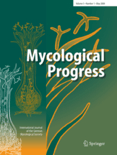
MYCOLOGICAL PROGRESS
Fostering collaboration in the realm of fungal biology.MYCOLOGICAL PROGRESS, published by SPRINGER HEIDELBERG, is an esteemed journal dedicated to advancing the field of mycology and associated biological disciplines. With an ISSN of 1617-416X and an E-ISSN of 1861-8952, this journal has established itself as a leading source of high-quality research, evidenced by its impressive rankings in the Q1 quartile across various categories such as Agricultural and Biological Sciences, Ecology, and Plant Science. As of 2023, MYCOLOGICAL PROGRESS ranks 37 out of 193 in Agricultural and Biological Sciences (miscellaneous) and 183 out of 721 in Ecology, demonstrating its significant impact in the ecosystem of scientific literature. This journal not only aims to disseminate innovative research findings but also strives to foster interdisciplinary collaboration among scientists, ecologists, and agriculturists around the globe. While retaining a traditional model of publication, MYCOLOGICAL PROGRESS remains crucial for those seeking to deepen their understanding of fungal biology and its broader environmental implications.